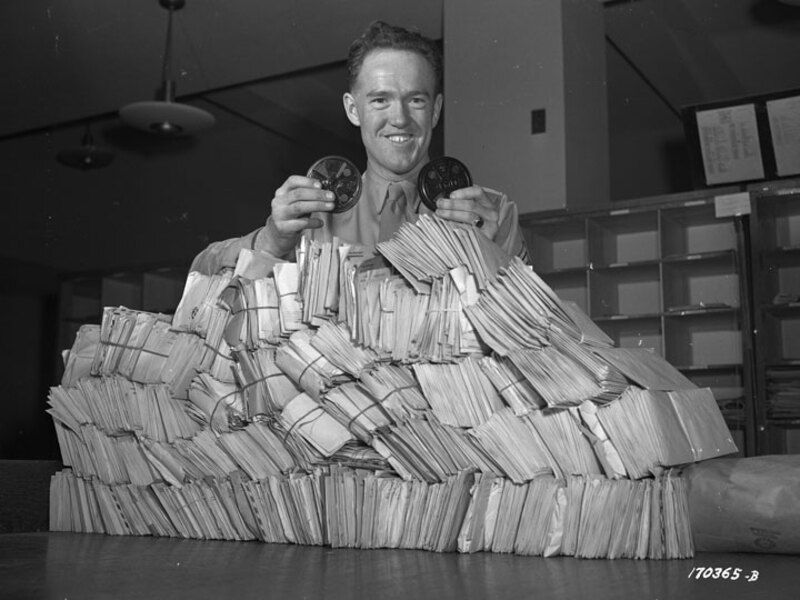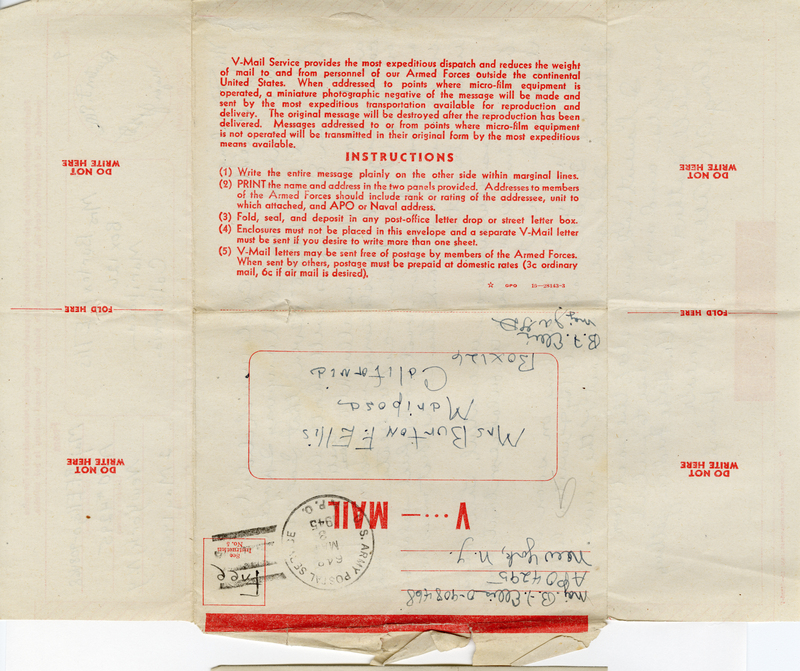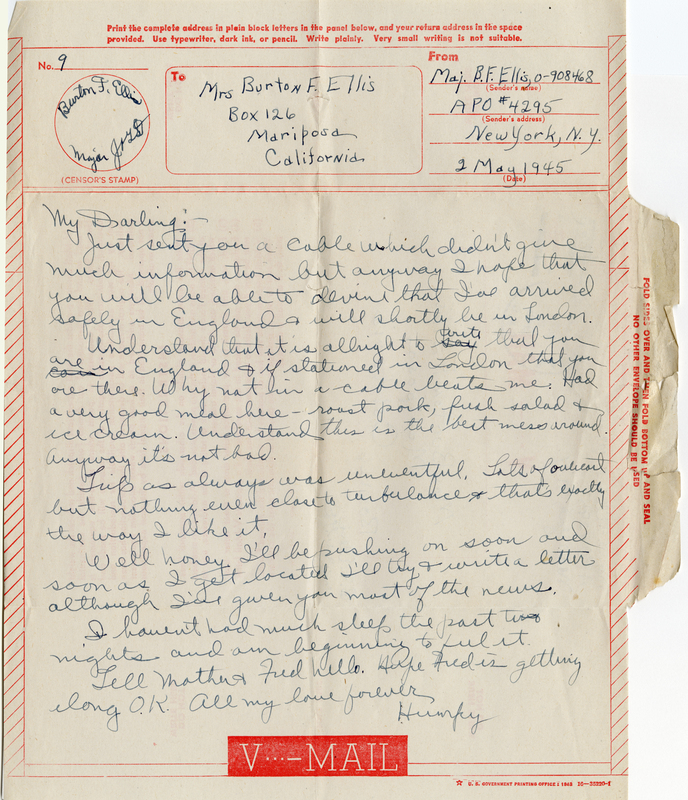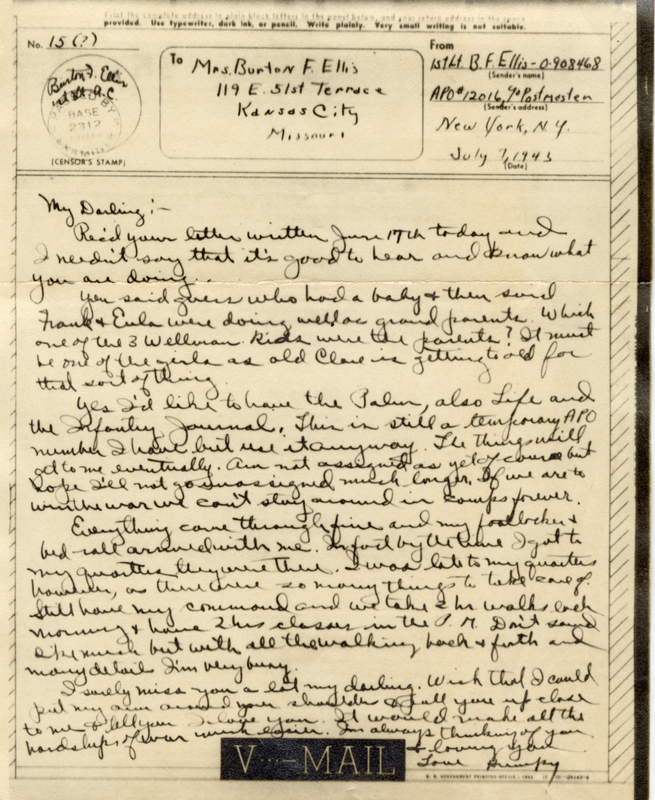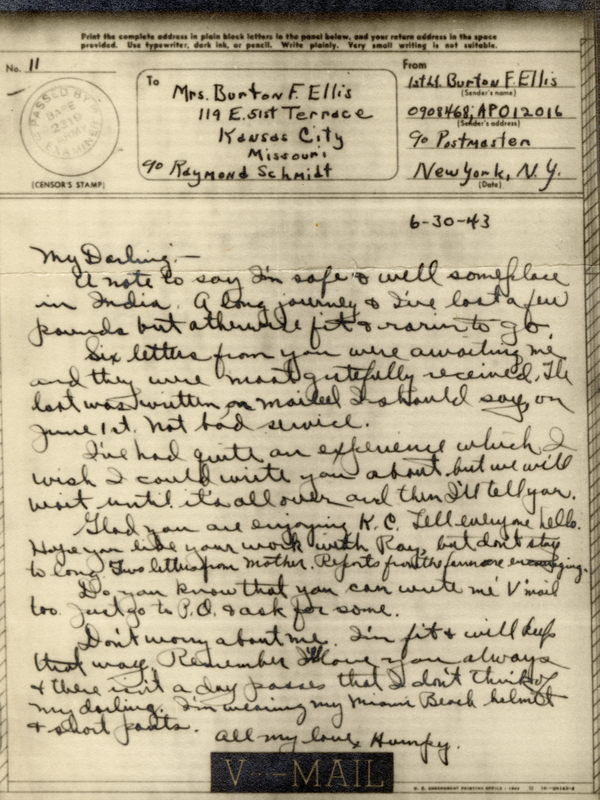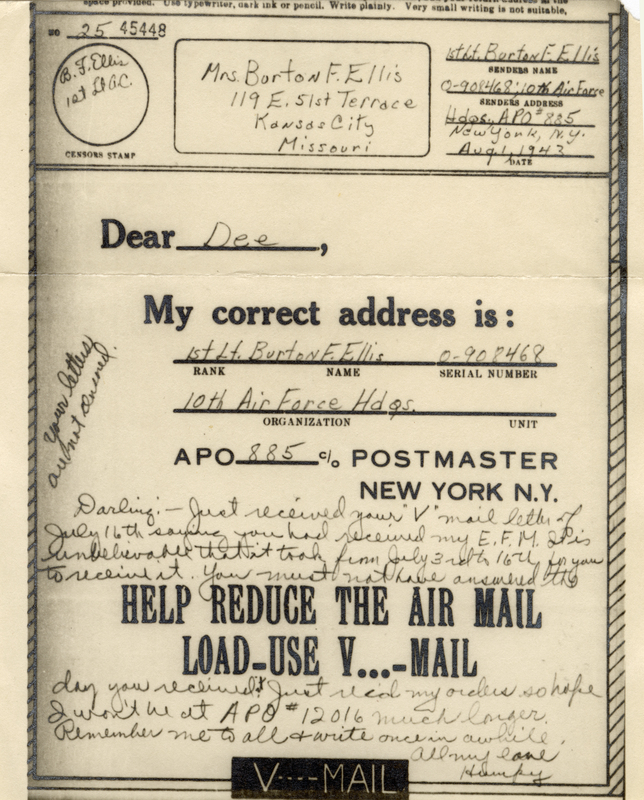Burton French Ellis was a University of Idaho alumnus and a career military officer. Among the books, articles, photographs, and correspondence that make up his papers in Special Collections are letters, cables, telegrams, and V-mail exchanges with his wife, Dee Dee. Letters were a vital touchstone for service people away from friends and family. In a letter home, Ellis lamented that no one at his base had received mail in over a week.
The Smithsonian National Postal Museum writes that during World War II there was an unprecidented amount of mail being sent out. From 1941-1945, the Navy increased their number of post offices by fivefold. Moving mail by ship could take up to a month and filled already limited cargo space.
In response to the rising demand, the United States adopted the British Postal Service’s Airgraph renaming it “V-mail” or “Victory mail.”
Sending V-mail involved writing a letter on a V-mail form. Technicians would copy it to 16mm microfilm reels. The Postal Museum reports that about 1500 letters could be placed on a five ounce reel. The film was then sent by air and upon arrival it was printed as a photograph 1/4 the size of the original. If the letter was sent to an area that didn’t have facilities to process film, the original document would be sent.
The reverse side of the form details the V-Mail Service and provides instructions for completing form. There was a spot at the top for the censor’s stamp. Between the “V” and “Mail” on the form was three dots and a dash, Morse code for “V.”
“V-Mail Service provides the most expeditious dispatch and reduces the weight of mail to and from personnel of our Armed Forces outside the continental United States. When addressed to points were micro-film equipment is operated, a minature photographic negative of the message will be made and sent by the most expeditious transportation available for reproduction and delivery. The original message will be destroyed after the reproduction has been delivered. Messages addressed to or from points where micro-film equipment is not operated will be transmitted in their original form by the most expeditious means available.”
Use of this new format sped delivery up to as little as 12 days and aircraft could also be used. Air transport minimized the chance of the mail being intercepted by the enemy but censors were still employed to remove potentially useful information. When V-mail was processed, it was numbered. If it was lost, it could be reproduced and resent.
On the change of address V-mail to his wife, Ellis closes with: “Remember me to all and write once in awhile. All my love.”
Resources
MG 409 Burton French Ellis Papers, 1852-2000
Mail Call-History of America’s Military Mail National Postal Museum, Smithsonian Institution


